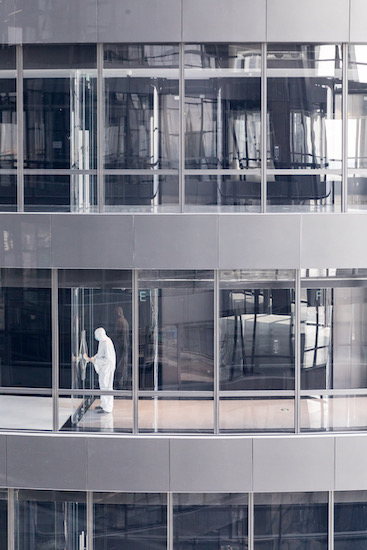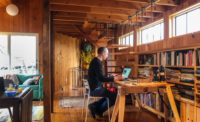To Architectural Record readers:
We are only in the beginning of the COVID-19 pandemic. Most of us engaged in architecture and design—as those in other professions—have seen our lives change radically in a matter of days. The state of California ordered its 40 million residents to shelter at home, the governors of New York State (20 million inhabitants) and Illinois (12 million) have now issued similar directives.
RECORD is here to cover the impact the virus is having on you and the profession at large. We are a forum to share information and news about the response to the health crisis from individual architects, firms, design education programs, clients, and allied industries.
In the last week, RECORD reported on the first death from coronavirus of a leading architect, Vittorio Gregotti, who died in a Milan hospital at the age of 92.

At the same time, we began hearing from many of you about closing your offices and moving staff home to conduct all or most business remotely. Firms like Gensler and KPF, with experience working in China and elsewhere in Asia, were well-prepared technologically, and with their close knowledge of the earlier virus outbreak there, to make the transition quite smoothly.
Small firms were moving less quickly, many giving employees the option to work from home—until, in places like San Francisco, regular office business was completely shut down. Architects like that city’s David Baker believe there’s no substitute for being in the studio together, but with remote working capabilities already in place, he said the adjustment was made with relatively few hurdles.
There were disturbing reports this week, too, of firms not allowing the option of employees to work from home—not only a worrying situation for health concerns about social distancing, but also a special hardship for parents whose children are home after school closures.
Some architects have already reported the cancellation of at least one project, while others will be affected by broader government shutdowns. In Boston, the mayor prohibited all construction for at least two weeks; while California and New York did much the same, for a longer period, those states exempted infrastructure and housing projects, which will keep some architects busy.
“We are all in uncharted territory,” Marsha Maytum, of Leddy Maytum Stacy Architects, told RECORD. “Our primary goal is to support the health, safety and well-being of all members of our team.” Maytum's main concern speaks for most of us, but second to that, apprehension about the economic health of businesses and workers is mounting. The AIA has reached out to Congress, urging both “significant investment in 21st-century infrastructure” and the expansion of “temporary relief for business owners.”
“It would be great for architecture firms to share their best practices and learnings,” Meaghan Lloyd, partner at Gehry Partners, told RECORD, after her office deployed its staff to work from home more than a week ago.
Architectural Record is committed to helping fill that gap. Please continue checking our website and social media channels (Instagram, Facebook, and Twitter) as a daily source of news, updates and ideas about short- and long-term best practices. Reach out to us, too, to tell us your stories and give us your insights as all of us navigate this uncertain future.






Post a comment to this article
Report Abusive Comment